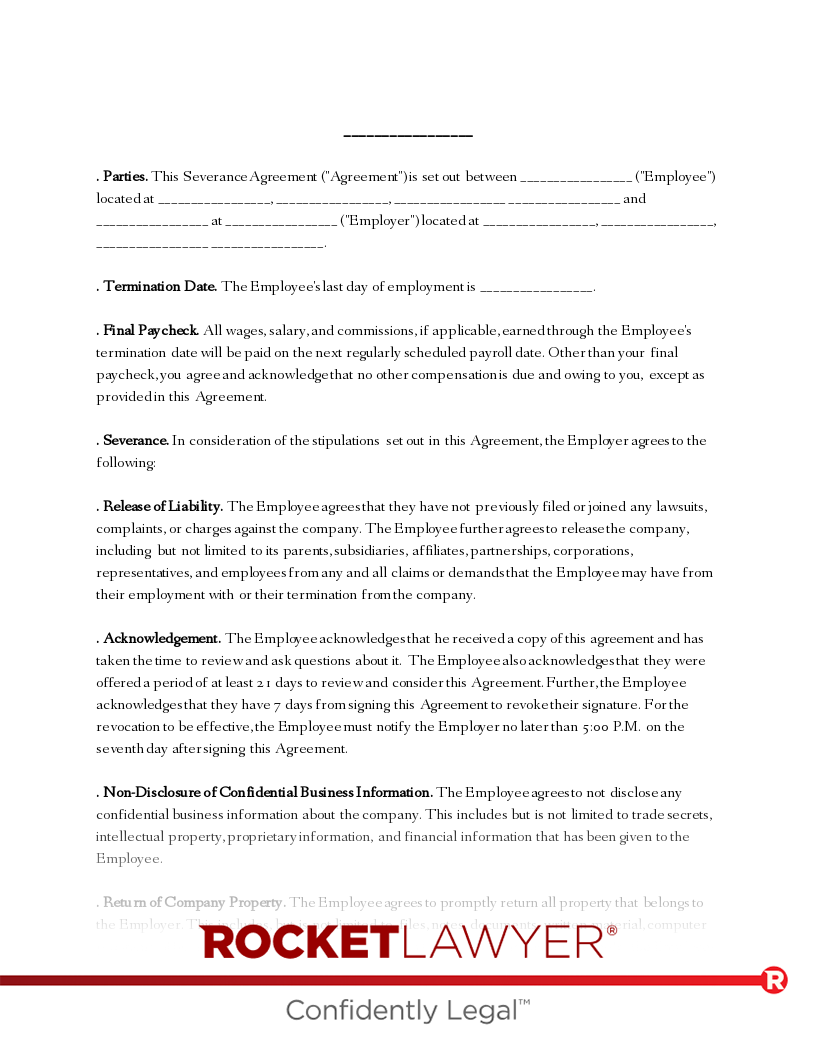What is a layoff?
When you layoff employees, it means those employees are being let go, often due to financial pressures on the business. While you can rehire a laid-off employee when the outlook improves, employees do not expect to be called back to work, and will start searching for new employment.
Also, an employee who has been laid off does not usually get to keep their employee benefits. An employer may, however, provide severance pay, but is otherwise ending the employment relationship entirely through a layoff. Employees who are laid off often qualify for unemployment benefits, even if they also receive a severance package. Severance is not required, unless it has been promised as part of your Employment Agreement, however, many employers do provide it to help soften the blow.
What does it mean to furlough workers?
A furlough is a mandatory suspension of work, without pay, with the expectation of a return to work at some point. Furloughs are often tied to a temporary, but extended, slowdown in work or cash flow. In some limited situations, employers may consider a partial furlough, where hours and pay are reduced proportionately.
When you furlough an employee, you typically provide a date on which you anticipate they will return to work or a condition that must be satisfied before work will resume. During the COVID-19 pandemic, for example, many employees were furloughed with the expectation that they would return to work when non-essential businesses were allowed to open once again. Furloughed employees typically retain their employment benefits, including health and life insurance, because they are legally still employed by the company. Pay, however, may be suspended.
What does reduction in force mean?
A reduction in force is similar to a layoff. It involves a separation from employment due to lack of funds, lack of work, redesign or elimination of positions, or reorganization, with no likelihood or expectation that the employee will be rehired. An RIF may occur when a business is bought, sold, or restructured, resulting in the elimination of positions. It can also happen when there is unnecessary redundancy in the responsibilities assigned to two or more positions.
Employees who are let go during this process are typically entitled to unemployment benefits, and employers often offer Severance Agreements to help those employees recover.
What is the primary difference between laying off and firing an employee?
The distinction between being laid off and being fired is important. The primary difference is that when an employee is laid off, it is considered to be the fault of the employer, even when it is due to conditions beyond their control. When an employee is fired, it is generally understood that they are at fault in some way.
That distinction matters when an employee seeks future employment opportunities, as they may be asked to explain what happened. More immediately, it matters if the employee applies for unemployment insurance (UI) benefits. In most states, a worker only qualifies for UI benefits if they are out of work through no fault of their own. Therefore, unemployment benefits are typically available to laid off and furloughed workers. If the worker was fired for not following rules or making mistakes, unemployment benefits are often denied.
How do I know which option is best for my business?
When deciding which option is best for your situation, there are many factors to consider. First and foremost, it is important to be realistic in terms of what your business can afford. This requires looking into your finances and understanding the various costs of each of your options. If you will not be able to pay your employees, it can be difficult, but necessary, to make some choices.
Business owners facing a temporary setback may want to carefully consider keeping their options open to recall their workers, and opt to furlough staff members. However, during a furlough, there is a very strict No Work Rule that must not be violated. If a salaried employee answers a single email or signs a single document while furloughed, you may be required to pay their salary for the entire week.
Additionally, as a general rule, the larger the company, the more involved the process is when you layoff employees. There are typically steps that must be taken and documents that must be filled out and filed before a layoff. Discussing layoffs with a lawyer who can guide you through the process can help you make sure everything is done right. Also, if there is a local or federal relief, as was the case during the pandemic, a lawyer can help you take advantage of these programs.
When businesses face trying times, it impacts the families and individuals that rely on that business for employment, too. It is important for employers and business owners to carefully review options if layoffs, furloughs, or a reduction in force is on the horizon. If you have more questions about managing layoffs, or weathering difficult economic times, reach out to a Rocket Lawyer network attorney for affordable legal advice.
Please note: This page offers general legal information, not but not legal advice tailored for your specific legal situation. Rocket Lawyer Incorporated isn't a law firm or a substitute for one. For further information on this topic, you can Ask a Legal Pro.
